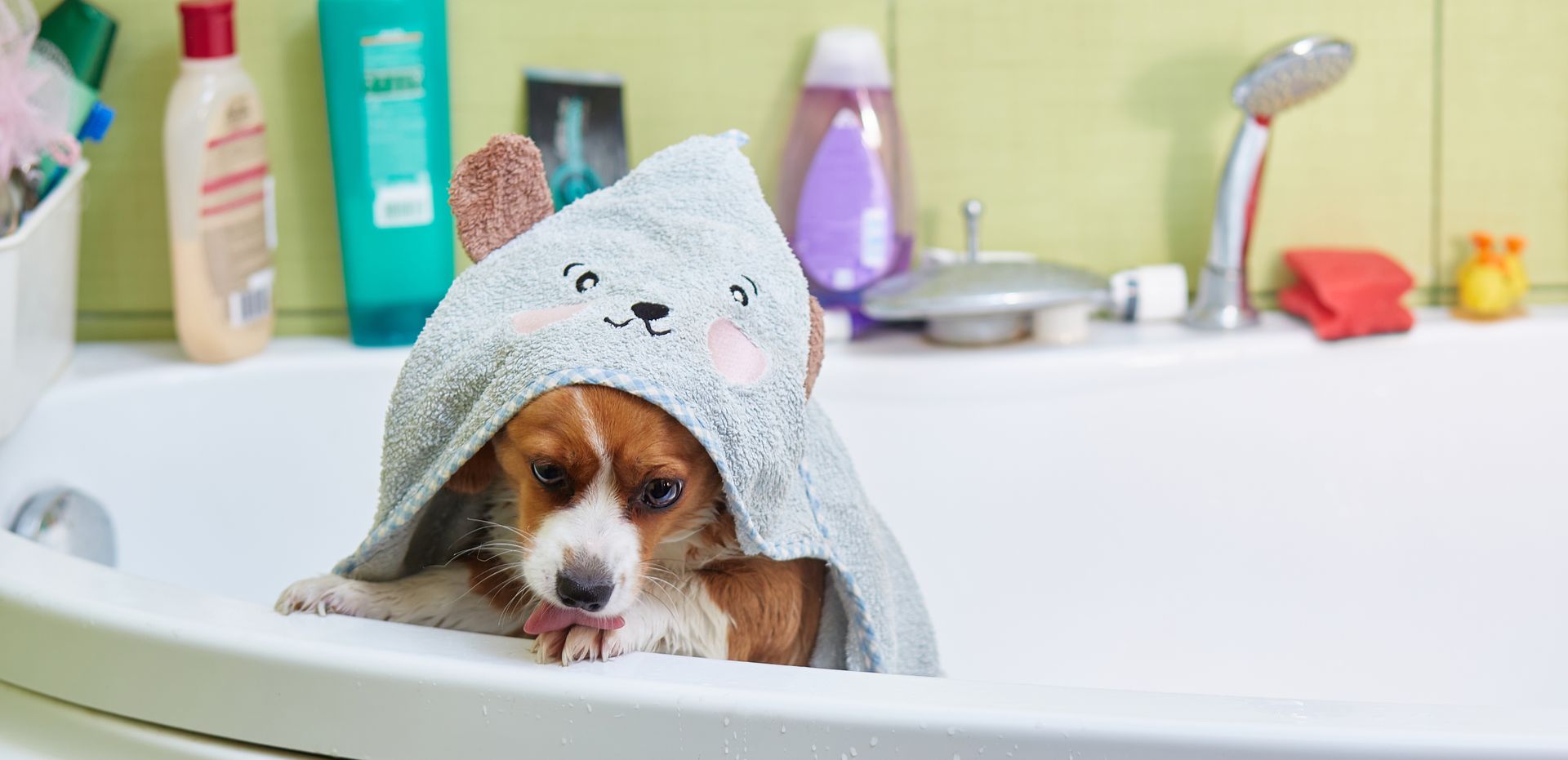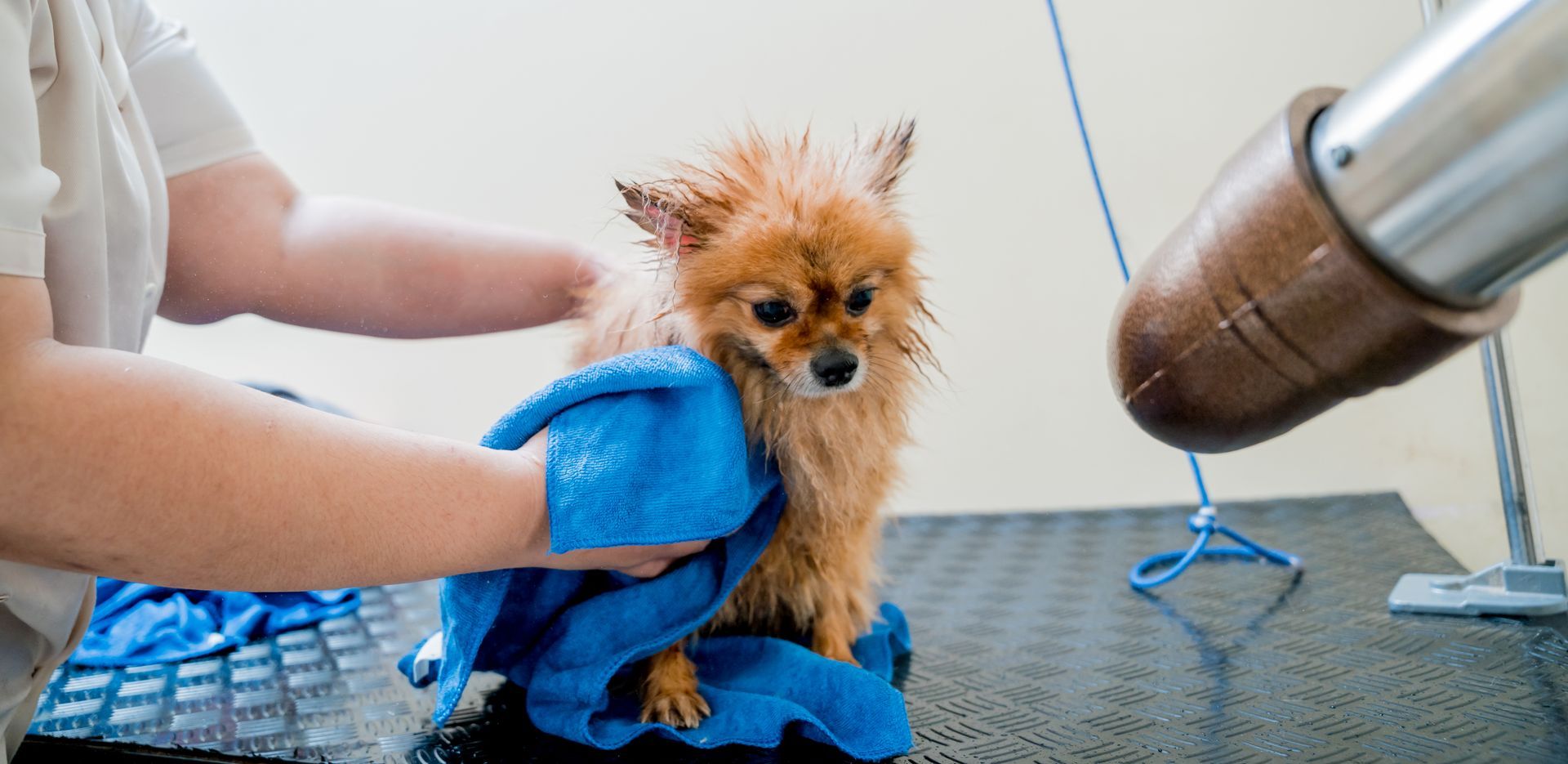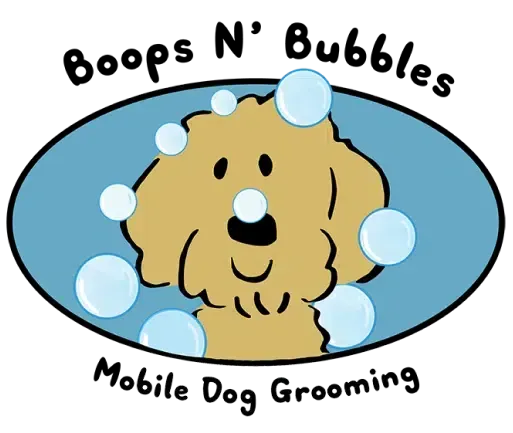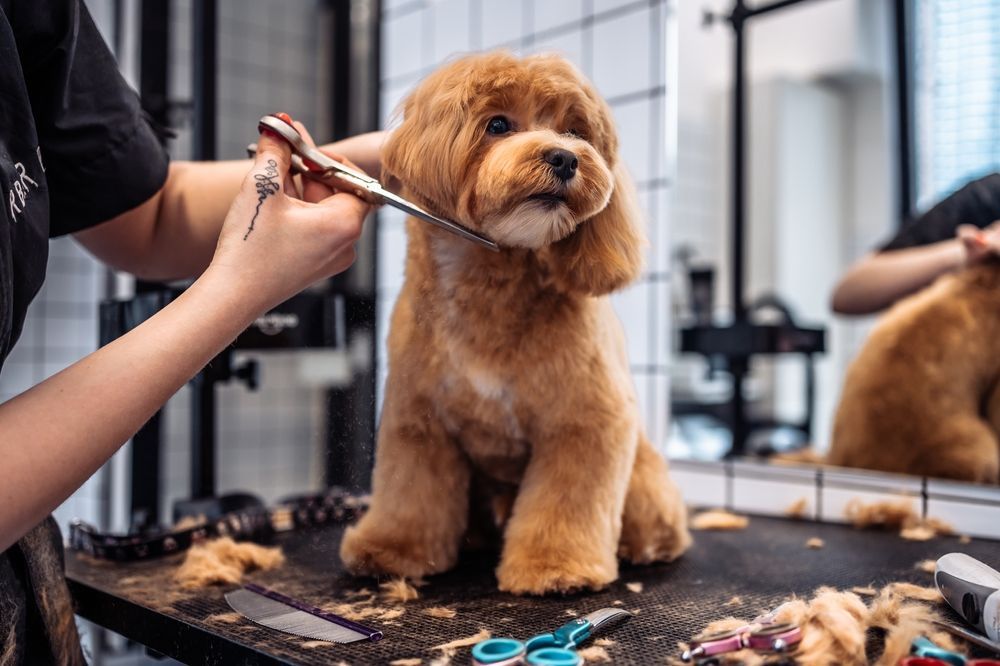Bathing Dog the Easy Way: Stress-Free Grooming
Bathing your dog shouldn’t feel like wrestling a wild animal in your bathroom. Yet, nearly 7 out of 10 pet owners admit that bath time is one of the most stressful parts of caring for their dog. The struggle is real, slippery floors, anxious barking, and water everywhere. Some owners even avoid bathing altogether and rely only on professional services like
Mobile Dog Grooming.
The good news? You don’t have to dread bath time anymore. With the right approach, simple preparation, and proven bath tips, you can establish a dog bathing routine that’s stress-free for both you and your furry companion. In this guide, you’ll learn everything from how often to bathe your dog, what products to use, common mistakes to avoid, and when professional dog grooming at home may be the smarter choice.
Why Bathing Your Dog Is So Important

Bathing a dog isn’t just about making them smell good. It directly impacts their health, comfort, and well-being.
- Skin health: A good bath removes dirt, bacteria, and allergens that could cause itching or infections.
- Parasite control: Fleas and ticks can be managed with regular washing and medicated shampoos.
- Coat maintenance: A clean coat reduces matting, shedding, and odor.
- Bonding time: Believe it or not, bath time, if done calmly, can strengthen trust between you and your pet.
Pro Tip: Without regular baths, dogs can develop skin irritations, allergies, and persistent odors that no air freshener can hide.
How Often Should You Bathe Your Dog?
One of the biggest questions dog owners ask is: “How often should I bathe my dog?” The answer depends on several factors:
- Breed & coat type: Dogs with thick, long, or double coats (like Golden Retrievers) may need baths more often than short-haired breeds.
- Lifestyle: Outdoor dogs or active pups that roll in mud or grass need frequent grooming.
- Health conditions: Dogs with skin allergies or fungal infections often require medicated baths prescribed by a vet.
Pro Tip: Bathing your dog every 4–6 weeks works for most breeds. Over-bathing can strip away natural oils, leaving the skin dry and itchy.
Preparing for Bath Time

Preparation is the secret to stress-free dog grooming at home. The calmer and more organized you are, the smoother it will go.
Essential Bath Supplies
- Dog-specific shampoo and conditioner (pH-balanced for pets)
- Towels (at least two)
- A non-slip mat for the tub or floor
- A spray nozzle or plastic cup
- A wide-tooth comb or brush
- Treats for positive reinforcement
Having everything within reach prevents interruptions that make dogs restless.
Step-by-Step Guide: Bathing Dog the Easy Way
Bathing a dog doesn’t have to feel like a messy battle. With the right steps, you can make it a calm and positive experience. Follow this guide to ensure your dog stays clean, comfortable, and stress-free during every bath.
1. Brush Before the Bath

Start by brushing your dog’s coat thoroughly. Brushing removes loose fur, dirt, and knots. If you skip this step, mats can tighten when wet and become painful to remove. Use a slicker brush for long-haired breeds and a bristle brush for short-haired dogs.
2. Choose the Right Location
Small dogs can be bathed in a sink or basin, while larger dogs are better suited for a bathtub or outdoor space with a hose. Always place a non-slip mat to prevent accidents and make your dog feel secure.
3. Prepare Lukewarm Water
Dogs are more sensitive to temperature than humans. Test the water with your wrist, it should be lukewarm, not hot or cold. Water that’s too warm can irritate their skin, while cold water can make them anxious.
4. Wet the Coat Slowly
Start wetting your dog from the neck down, working toward the tail. Avoid splashing water directly on the face, ears, or nose. For sensitive areas, use a damp washcloth instead of a spray nozzle.
5. Apply Shampoo Correctly
Use a shampoo designed specifically for dogs. Apply a small amount and lather gently with your fingers, massaging in circular motions. Pay extra attention to areas that collect dirt, like paws, belly, and tail. Avoid the eyes and inside the ears.
6. Rinse Thoroughly
Shampoo residue can cause itching, so rinsing is just as important as washing. Start from the head (carefully) and rinse down to the tail. Continue until the water runs completely clear.
7. Condition (Optional)
Do dogs need conditioner after a bath? Yes! If your dog has a long or thick coat, use a pet-safe conditioner to prevent tangles and reduce the danger of matting. It also keeps the fur soft and manageable. Leave it on for the recommended time, then rinse thoroughly.
8. Dry Your Dog Properly

First, towel-dry your dog by patting (not rubbing) to avoid tangles. For dogs that tolerate it, use a blow dryer on the lowest heat and speed setting. Keep the dryer moving and at a safe distance. For anxious pets, stick to towel drying in a warm room.
9. Post-Bath Brushing
Once your dog is dry, brush the coat again to remove any remaining tangles and restore shine. This also helps spread natural oils evenly across the fur.
Dog Bathing Routine: Making It Stress-Free
Consistency is key to success. Here’s how to make bath time part of your dog’s routine:
- Pick a regular schedule: Once every 4–6 weeks keep them clean without irritation.
- Keep sessions short: A full bath should take no longer than 15 minutes.
- Reward with treats: Praise and snacks reinforce good behavior.
- Stay calm and patient: Dogs sense your mood, be encouraging, not rushed.
Common Mistakes to Avoid
Dog owners often unknowingly make mistakes during bath time. Here’s what to watch out for:
- Using human shampoo: Harsh on a dog’s skin and coat.
- Bathing too often: Leads to dry, flaky skin.
- Skipping ear protection: Water in ears can cause painful infections.
- Not rinsing completely: Shampoo residue leads to itching.
- Neglecting post-bath brushing: Skipping this step can cause tangles and the danger of matting.
Special Bathing Cases
Every dog is different. Some require extra care during grooming:
- Puppies: Keep sessions short, gentle, and fun to build positive associations.
- Senior dogs: Use non-slip mats to protect joints.
- Dogs with skin issues: Use vet-approved shampoos.
- Anxious dogs: Play calming music or use pheromone sprays to ease stress.
Bath Tips for Dog Owners
Beyond the basics, here are expert bath tips that make grooming easier:
- Trim nails before bath time to avoid scratches.
- Place cotton balls in ears (lightly) to prevent water entry.
- Use a detachable shower head for even rinsing.
- Keep a second towel handy for quick drying.
- Brush again after drying to restore fluffiness.
Home Grooming vs. Professional Grooming
Bathing a dog at home is budget-friendly and strengthens your bond, but there are times when professional help is better.
Choose home grooming if:
- Your dog is small or manageable.
- You want to save money.
- You’re comfortable handling bath time.
Choose professional grooming if:
- Your dog has a thick, long coat.
- They need haircutting, nail trimming, or ear cleaning.
- Your dog is extremely anxious or aggressive.
Professional groomers offer stress-free services and handle tasks that many owners find challenging.
Conclusion
Bathing a dog doesn’t need to be a dreaded chore. By preparing properly, using the right products, and following a gentle dog bathing routine, you can keep your pet clean and healthy without stress.
For busy pet parents or anxious pups, professional grooming services can provide peace of mind and expert care. Whether you do it at home or hire a pro, what matters most is your dog’s comfort and well-being.
Ready to give your dog a stress-free grooming experience?
Book our dog grooming services today and make bath time a breeze.
FAQs About Dog Bathing Routine
What’s the best shampoo for bathing a dog at home?
Always use a pH-balanced dog shampoo. Avoid human shampoos and strong chemicals.
Can I bathe my dog weekly?
No. Unless recommended by a vet, weekly baths strip natural oils. Stick to every 4–6 weeks.
Should I brush my dog before or after bathing?
Both! Brush before to remove tangles and after to keep the coat smooth.
Can We Use Baby Shampoo on Dogs?
You can use baby shampoo on dogs in an emergency because it’s gentle, but it’s not ideal for regular use. Dog-specific shampoos are safer for their skin and coat.
How to give an unwilling dog a bath?
Use treats, stay calm, and introduce water slowly. Keep sessions short and positive.
Is it OK to skip bathing a dog?
Sometimes yes, but long-term skipping can cause odor and skin issues. Bathe every 4–6 weeks.
Can I wash my dog with dish soap?
No. Dish soap is too harsh and dries the skin. Always use dog-safe shampoo.


